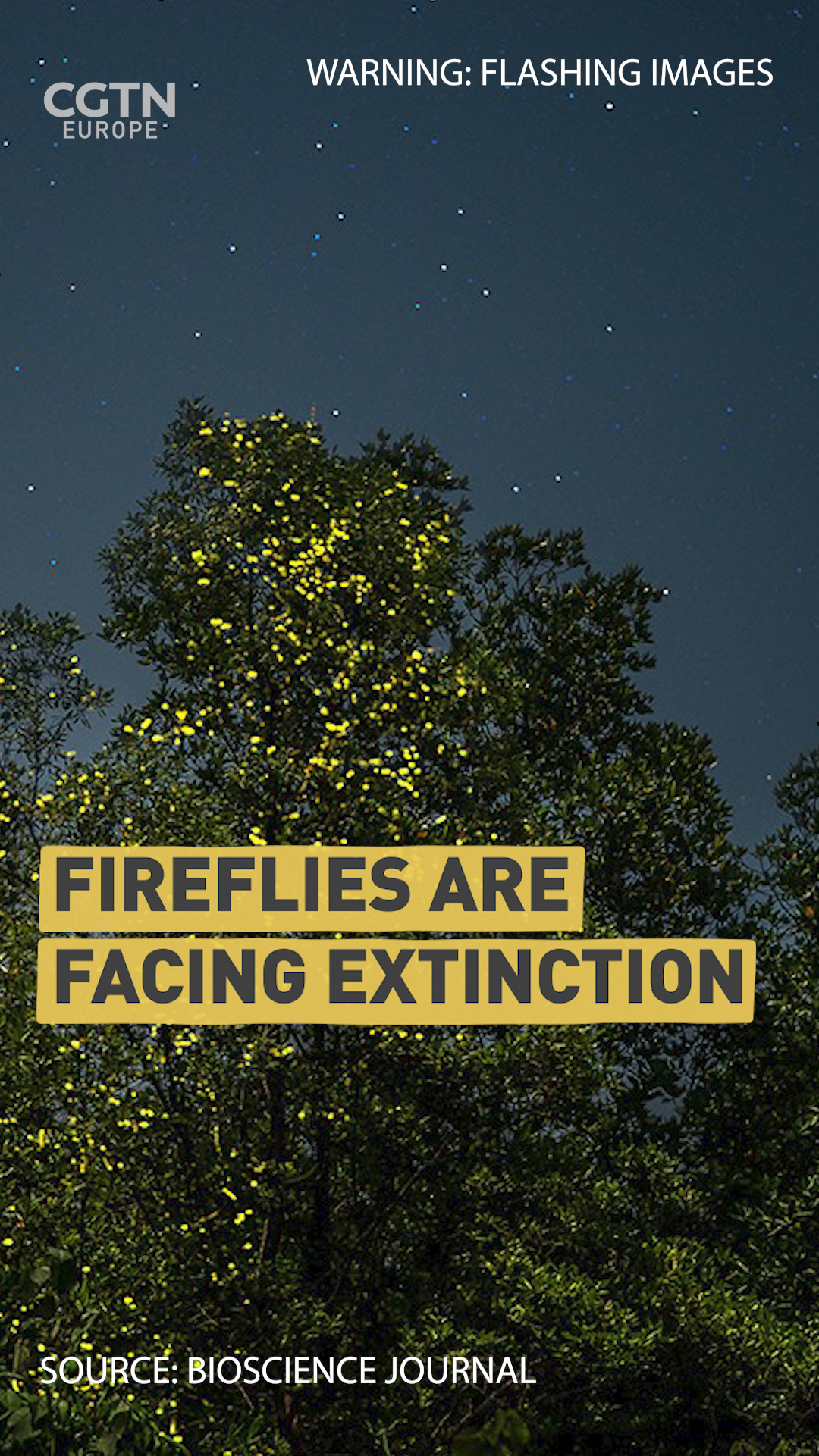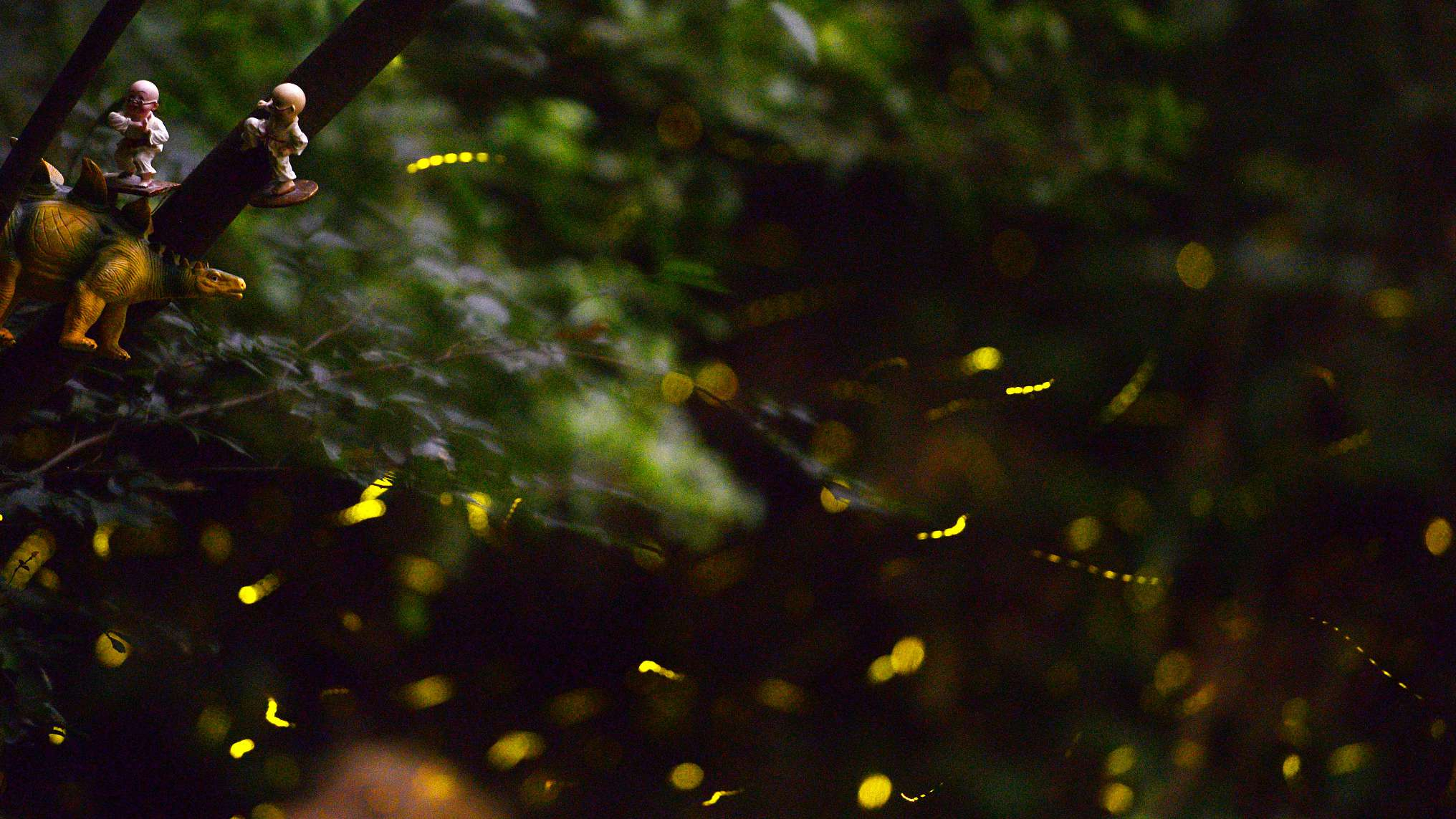01:43

The future of fireflies is under threat, with many species facing extinction due to habitat loss, exposure to pesticides and artificial light pollution.
The study, which was reported in BioScience Journal, said that fireflies - of which there are more than 2,000 species - are dwindling in numbers because of humanity's ever-expanding ecological footprint.
Sara Lewis, a biologist at Tufts University in Massachusetts, said: "Some species get hit especially hard by habitat loss because they need specific conditions to complete their life cycle."
During its larval phase, the Malaysian firefly Pteroptyx tener lives in mangroves - but many of these have been ripped up and flattened to make way for palm oil plantations and fish farms.
The glow-worm, which belongs to the same group as fireflies but is flightless, is unable to find new habitats when its living environment is destroyed.

Fireflies in a park in Jiangsu Province (Credit: VCG Photo)
Fireflies in a park in Jiangsu Province (Credit: VCG Photo)
Some fireflies, which eat only during their larval phase, are "dietary specialists" and they only subsist on very specific types of snails, earthworms or other soft-bodied prey.
This is a particular issue in Spain, where fruit orchards are being abandoned and destroyed at high levels for urbanization. The snails are also a major part of fireflies' diets, and in turn fireflies are dwindling in population size.
Scientists have said that out of 10 possible causes of extinction, habitat loss is the top threat everywhere, apart from east Asia and South America.
Artificial light is also a major issue in threatening firefly populations.
Fireflies depend on their ability to light up to attract mates, but this is becoming increasingly difficult for them. Mating rituals have been interrupted in countries such as Malaysia, where fireflies congregate for nightly courtship displays in trees located along mangrove rivers.
Read more Do fireflies worry about light during the rainy season?
Read more In pictures: Fireflies at night
"In addition to disrupting natural biorhythms, light pollution really messed up firefly mating rituals," said co-author Avalon Owens, a doctoral student at Tufts.
Their window of opportunity is being restricted. The firefly larval phase can last for months or years, while the adults typically only live for a few days.
Insecticides are completely wiping out populations.
"Organophosphates and neonicotinoids are designed to kill pests, yet they also have off-target effects on beneficial insects" researchers explained in the journal.
The study added that firefly tourism, which has long been a popular tourist activity, is also having a detrimental effect on firefly populations. Foot traffic and people passing through fragile ecosystems are interrupting the fireflies.
Climate change is not currently considered a threat to firefly population numbers, but future sea level rise and drought could potentially accelerate the drive towards extinction.
Remember to sign up to Global Business Daily here to get our top headlines direct to your inbox every weekday